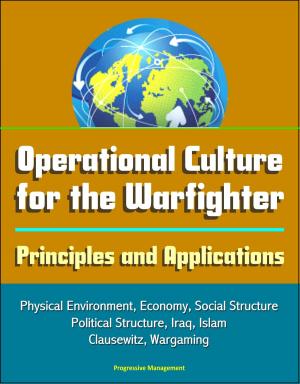Wind Tunnels of NASA: History of Their Contribution to Flight Science from the Wright Brothers to the Shuttle, Current NASA Facilities for Aircraft and Spacecraft Tests
Nonfiction, Science & Nature, Technology, Aeronautics & Astronautics, Science, Physics, Astrophysics & Space Science| Author: | Progressive Management | ISBN: | 9781476238005 |
| Publisher: | Progressive Management | Publication: | May 19, 2012 |
| Imprint: | Smashwords Edition | Language: | English |
| Author: | Progressive Management |
| ISBN: | 9781476238005 |
| Publisher: | Progressive Management |
| Publication: | May 19, 2012 |
| Imprint: | Smashwords Edition |
| Language: | English |
This ebook provides comprehensive coverage of the history and accomplishments of wind tunnels, featuring a reproduction of the NASA history document, Wind Tunnels of NASA, along with a special section outlining some current NASA wind tunnel capabilities. The foreword of this important volume states:
Although wind tunnels are among the most important tools of aeronautical research, these facilities have remained the least understood. Some say this is partly because the instrumentation and calibration are complicated and difficult to understand and partly because the researchers that use wind tunnels too often speak in language intended for their peers and invented for their particular disciplines. Whatever the reason, this book goes a long way toward bridging the gap between engineer and layman. Wind Tunnels of NASA is both factual and readable.
By no means an inventory of wind tunnels, the book does not even contain a complete listing of current facilities-that being one element in its readability. The purpose of the book is to describe the contribution of these remarkable research facilities to the science of flight. What the text deals with are topics such as these. Why are wind tunnels useful? What do they do superbly well, and how? What have they done that is so great? How did they develop, and what forms did this development take? What are their typical problems and limitations? What are the pitfalls in scaling, calibration, and instrumentation ? Are there unexpected surprises when one goes from tunnels to full-size aircraft? Where are we now in wind tunnel research? Wind Tunnels answers these questions very well.
NASA's wind tunnels form the basis for the book, but Air Force, university, and industry facilities are also considered and the wind tunnels of other countries are assessed to some extent.
Wind tunnels are truly individual and unique in function and suggests the quality of service they have given to the nation's technological advances in aerospace.
Wind Tunnels of NASA is co-authored by an aeronautical engineer with more than 40 years of NASA wind tunnel expertise and by a highly respected engineering and science writer. Donald D. Baals has been with NASA and its predecessor, the National Advisory Committee for Aeronautics (NACA), since 1939 and has continued to serve the agency as a senior research associate since retirement. Among his many honors have been the NASA Medal for Exceptional Service (1971) and the NASA Public Service Award (1976) for his role in planning the National Transonic Facility. Mr. Baals lives in Newport News, Virginia. William R. Corliss, a science publisher and freelance author, has written a number of publications for NASA, including The Interplanetary Pioneers and NASA Sounding Rockets. He lives in Glen Arm, Maryland.
This ebook provides comprehensive coverage of the history and accomplishments of wind tunnels, featuring a reproduction of the NASA history document, Wind Tunnels of NASA, along with a special section outlining some current NASA wind tunnel capabilities. The foreword of this important volume states:
Although wind tunnels are among the most important tools of aeronautical research, these facilities have remained the least understood. Some say this is partly because the instrumentation and calibration are complicated and difficult to understand and partly because the researchers that use wind tunnels too often speak in language intended for their peers and invented for their particular disciplines. Whatever the reason, this book goes a long way toward bridging the gap between engineer and layman. Wind Tunnels of NASA is both factual and readable.
By no means an inventory of wind tunnels, the book does not even contain a complete listing of current facilities-that being one element in its readability. The purpose of the book is to describe the contribution of these remarkable research facilities to the science of flight. What the text deals with are topics such as these. Why are wind tunnels useful? What do they do superbly well, and how? What have they done that is so great? How did they develop, and what forms did this development take? What are their typical problems and limitations? What are the pitfalls in scaling, calibration, and instrumentation ? Are there unexpected surprises when one goes from tunnels to full-size aircraft? Where are we now in wind tunnel research? Wind Tunnels answers these questions very well.
NASA's wind tunnels form the basis for the book, but Air Force, university, and industry facilities are also considered and the wind tunnels of other countries are assessed to some extent.
Wind tunnels are truly individual and unique in function and suggests the quality of service they have given to the nation's technological advances in aerospace.
Wind Tunnels of NASA is co-authored by an aeronautical engineer with more than 40 years of NASA wind tunnel expertise and by a highly respected engineering and science writer. Donald D. Baals has been with NASA and its predecessor, the National Advisory Committee for Aeronautics (NACA), since 1939 and has continued to serve the agency as a senior research associate since retirement. Among his many honors have been the NASA Medal for Exceptional Service (1971) and the NASA Public Service Award (1976) for his role in planning the National Transonic Facility. Mr. Baals lives in Newport News, Virginia. William R. Corliss, a science publisher and freelance author, has written a number of publications for NASA, including The Interplanetary Pioneers and NASA Sounding Rockets. He lives in Glen Arm, Maryland.















